#Visual studio 2013
Explore tagged Tumblr posts
Text
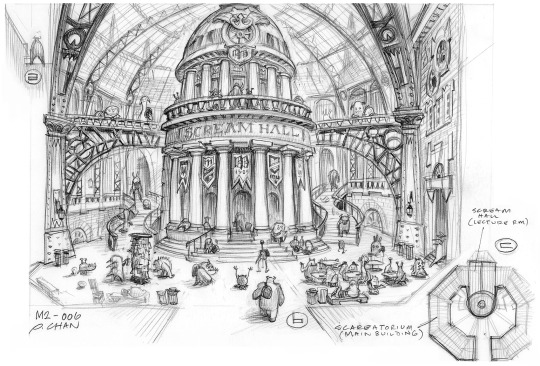

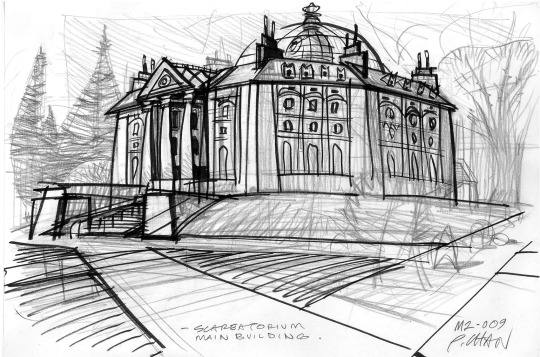


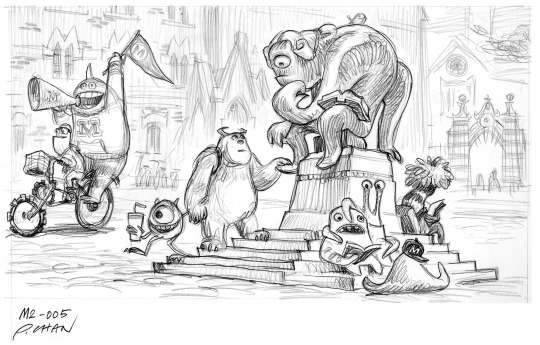
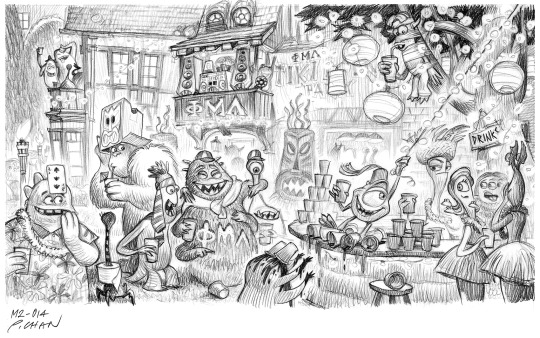
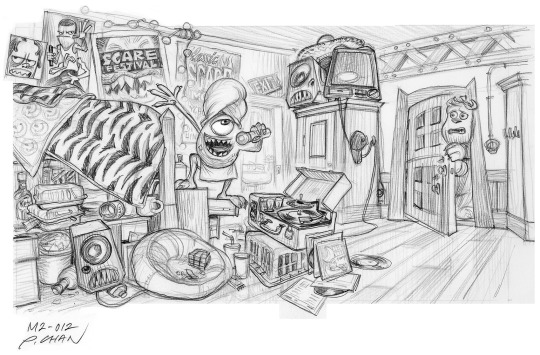



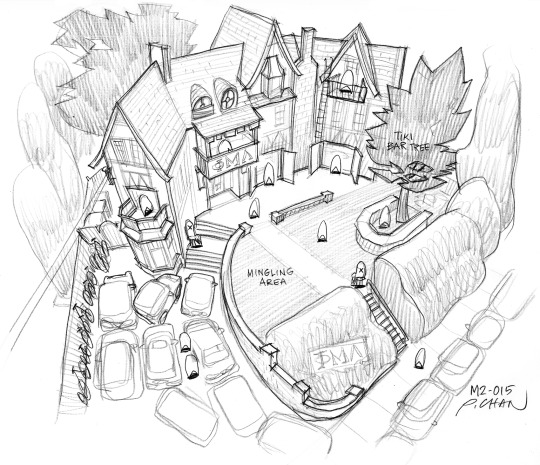
#pixar#pixar animation studios#the art of pixar#disney#pixar art#concept art#art#visual development#enviroment design#peter chan#monsters university 2013#monsters university
64 notes
·
View notes
Text
Kill la Kill (anime)

So, twelve years on, did Trigger save anime?
Existing in the present will invariably inundate one with lifeless, disposable, trend-chasing pop media, no matter the medium. Not only do moneymen like to imitate whatever made money before, but artists like to imitate the art they enjoy. The current moment will always seem bloated by dreck, while the past, filtered via the sieve of time, will always seem to contain only gleamingly original works of greatness. Were the 1980s not a golden age of blockbuster cinema, with Aliens and Indiana Jones and Ghostbusters? Please ignore the 1,000 shoddy E.T. knockoffs, thank you, or the million formulaic action hero flicks aping the Schwarzenegger formula.
Anime in 2013, when Kill la Kill began airing, was no different. The past two years had seen Puella Magi Madoka Magica, Hunter x Hunter, Fate/Zero, Stein's;Gate, Kuroko no Basket, Nichijou, Nisemonogatari, Psycho-Pass, and Attack on Titan, all popular and well-regarded shows both when they released and today. So the memetic idea in the anime community that Trigger was "saving anime" with Kill la Kill is patently ridiculous. (If you don't believe how widespread this idea was, two of the three top reviews for the show on MyAnimeList, written the same day the show finished airing, allude to it.)
It's easy to see how the idea became so popular, though. Trigger was a brand new studio formed primarily by staff from debt-stricken Gainax, the legendary studio that in 1995 revolutionized anime with Neon Genesis Evangelion. Eva's main creative figure, auteur director Hideaki Anno, wasn't with Trigger, but many of the people behind Gainax's other popular shows like Gurren Lagann and Panty & Stocking were, so the studio had a new-look fresh-start feel while drawing on a proven lineage of success.
At the same time, Kill la Kill itself promotes its revolutionary nature. Its plot revolves around a lone rulebreaking badass taking on an entrenched system defined explicitly by its aesthetic uniformity. It's not a difficult leap to read this storyline metaphorically, Trigger battling the waves of copy-paste seasonal anime.
However, what is most striking, most obviously eye-catching and unique about Kill la Kill, what hits the viewer with the immediate sense that this show is something different, something new, something like nothing you have seen before, is that it looks like nothing you have seen before. Kill la Kill is brimming with unique and memorable images, from the gigantic red block text used to introduce every new character and concept, to the bizarre ship-like architecture of Honnouji Academy, to the blend of fluid sakuga with choppy PowerPoint animation for comedic effect, to smaller iconic moments like Satsuki clicking her heel. It's always in-your-face about it, too. The opening scene sets the tone when a dry history lecture gets interrupted by Gamagoori squeezing through a door like a behemoth, utterly ignoring any rules regarding on-model consistency.
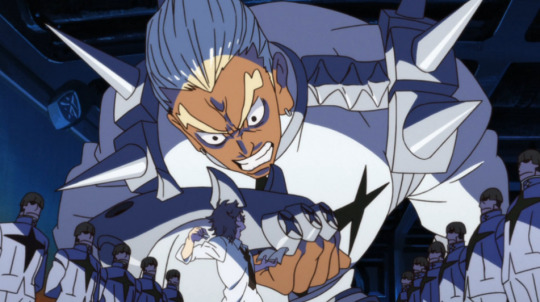
It's this devotion to the unique image that sets Kill la Kill apart from most of the other 2011-2013 shows I listed previously, shows that, while they might have a consistent aesthetic sensibility (such as Stein's;Gate's washed-outness or Fate/Zero's glimmering post-processing effects), are often conforming at their core to ideas of what anime "should" look like in terms of character design, setting, and animation. (The two Shaft shows I listed are an exception, but by this point Shaft's Akiyuki Shinbo had been doing his idiosyncratic visual style for over a decade, and wasn't exactly a fresh face.) Trigger's staff previously created Panty & Stocking, a show imitating the look and feel of western cartoons; Kill la Kill advances that idea into a wholly unique fusion of western and Japanese animation traditions, allowing it to break free of the insular anime landscape and its expected visual signifiers.
Obviously the counterpoint lurking beneath this preamble is that, under the unique visuals and tone, Kill la Kill isn't all that innovative at all, even painfully standard at times. Battles are decided by the power of friendship or the power of staying true to oneself (Don't Lose Your Way!), the hero is mind controlled and her friends call out to her until she breaks free, the one-dimensionally evil villain has a big end-the-world plot that everyone teams up to defeat. Even within the parameters the story establishes for itself, Ryuko proceeds linearly, starting out by fighting small fry club captains, then the Elite Four student council, then Satsuki the student council president, and finally Satsuki's mother who owns the school, with only a few speed bumps along the way.
But Kill la Kill makes the argument that aesthetics are too intimately interwoven with content to be disentangled that way. It's the crux of the conceit of the show, which is founded on a series of puns. "Fascism" sounds like "fashion," so in the world of Kill la Kill those concepts are now entwined. "School uniform" ("seifuku") and "conquest" ("seifuku") are homophones, so uniforms are the method by which Satsuki exerts her intra-Japanese imperialism. (Early on, Satsuki delivers a monologue in which she remarks on how Japanese school uniforms are aesthetically modeled on military uniforms, making it natural for her to militarize her school.) The title is itself a tripartite pun, combining words for "kill," "cut," and "wear." (Notably, this is a pun that blends the English and Japanese languages, much like the blended animation style.) Despite the visual, slapstick nature of Kill la Kill's humor, puns abound throughout. Some are obvious even in translation, such as the "Naturals Election" used to choose the new student council, while others can be difficult to catch. Nui, for instance, apes Dio Brando's catchphrase of "muda, muda, muda" (useless, useless, useless); later, when her arms are cut off, she screams "ude, ude, ude" (arms, arms, arms).
youtube
The core idea of most of these puns is that superficial similarity indicates similarity of content. Sometimes, this is an insightful observation, such as with the pun between fashion and fascism. Fascism is notoriously difficult to define rigidly in relation to other forms of dictatorship, but what is easy to define about it is its aesthetics, to the point that films like Star Wars are able to use aesthetic signifiers of fascism to define the politics of its villains even when withholding any actual explanation of those politics. Star Wars never has to show what the day-to-day rule of the Empire is like, because its army looks like the Nazis, so the audience gets the idea. Fascism as a political ideology and fascism as an aesthetic are, effectively, the same thing.
And if aesthetics are equivalent to meaning, then doesn't that mean that Kill la Kill looking new in fact makes it new? That its plot, generic in dry summary, is elevated by the distinctive way it's depicted? One pun, delivered upon the revelation that parasitic alien clothes have influenced humanity's evolution for the purpose of harvesting them for food (a story beat itself derivative of Puella Magi Madoka Magica), is that "the clothes make the mankind." The common refrain of Satsuki and Ragyo that people are "pigs in human clothing" hammers the point home: Aesthetics are everything. There is no meaning without aesthetics, just as people without clothes are unevolved animals.
Ultimately, though, Kill la Kill rejects this statement. Clothes are the enemy, literally, and the heroic organization fighting against them is Nudist Beach, whose members fight naked. At the end of the show, all clothes are destroyed, and the final image before the credits is of the entire cast in a giant, naked, triumphant huddle, an assertion of the inherent value of humanity even without aesthetic adornment. Isn't that the point behind all those power-of-friendship, power-of-believing-in-yourself speeches that Ryuko, Mako, and Senketsu use to turn the tables and win the battle? An appeal to a hidden inner nature that one must remain true to (Don't Lose Your Way!!!), that can overpower superficial displays of strength? Ryuko's mind control arc depicts this idea most overtly. She is controlled by having clothes sewn to her skin -- having an aesthetic forced onto her -- but Mako manages to dive into Ryuko's inner world to bring her back to her "true self."
This kind of undermines Kill la Kill as a work, though. What does a "nudist" Kill la Kill look like, stripped of its unique visual language? Certainly not something that would stand out from the waves of high school battle shounen that have been a fixture in the anime landscape since time immemorial. Kill la Kill's thesis might assert that there's a reason these power-of-friendship cliches endure (a sort of, if you'll allow me to become a parody of myself for a moment, post-postmodern reclamation of a narrative mode tarnished by irony and cynicism), but it contradicts the unique visual style that Kill la Kill developed to convey that idea.
In some ways, Kill la Kill does strip down to a nude, or at least semi-nude, state by the end. Many of its earlier concepts, including the connection between fashion and fascism, vanish as the story progresses. Satsuki and her fascist system are revealed to have been a deception while she secretly worked to betray her mother (playing on Ragyo's mistaken belief that aesthetics mean everything by Satsuki looking compliant while not actually being so), and once the twist occurs, the entire fascism plotline goes out the window. It's never really mentioned again; even when Ryuko gets on Satsuki's case for her past misdeeds, she only calls her out for "Looking down on people from on high," a general and ideologically-agnostic call against elitism. The 1-episode OVA set after the series briefly touches on the fascist system Satsuki enforced, with the episode's villain accusing Satsuki and the Elite Four of generating real, actual terror and abuse despite their ultimately pure motives (an assertion, once more, that aesthetics mean everything, that looking fascist makes you fascist no matter your true beliefs), but Mako quickly dismisses the claim with another power-of-friendship speech. Satsuki and the Elite Four have grown as people, she says. They're no longer bad like they used to be!
Kill la Kill also gets stripped down tonally by its end. The show's opening scene depicts a disobedient student being whipped, seemingly to death; later, his nude corpse(?) is displayed over the school gates. Combined with the title "Kill la Kill," it sets a dark, violent tone that lends weight to the otherwise cartoonish animation style. By the end, though, this dark tone is revealed as a false aesthetic; there is remarkably little killing in Kill la Kill. Stripped of real narrative stakes, the climactic battles diminish to flashy lightshows, action figures bouncing against each other. Worst of all, the blend of "fluid sakuga with choppy PowerPoint animation" I mentioned earlier increasingly tilts toward the latter. This is largely due to the prominence of Nui as an antagonist, since her cartoonishness is part of her character, but given Gainax's track record of running out of money and/or time by the end of its shows and phoning in parts of them, I wonder whether the habit transferred over to Trigger.
In short, as Kill la Kill strips down, it becomes a weaker show. In doing so, it not only undermines its own theme, but undermines itself as a truly new and innovative work, exposing its reliance on superficial aesthetic. The notion that Trigger "saved anime" would depend not only on Kill la Kill's individual success, but on its influence; twelve years out, and the only other notable shows like Kill la Kill were also made by Trigger. Perhaps you can see some influence on Masaaki Yuasa, who also blends high-quality sakuga with deliberately cheaper animation for comedic or stylistic effect, but he had already established himself in 2010 with Tatami Galaxy. Another show with a distinctive "Trigger" feel, Flip Flappers, was a flop flopper that caused its studio to immediately pivot to generic seasonal stuff.
My friend Lurina, when I asked her whether Trigger really had any influence over the larger anime landscape, suggested that Trigger sparked a general desire for more high-quality animation, which can be seen today in shows like Chainsaw Man or Dandandan. I would counter that those shows, while well-made, lack the distinctive blend of high and low, east and west that defines Trigger; if anything, the notion of the high-quality seasonal shounen adaptation comes from My Hero Academia, where Bones eschewed the traditional 500-episode weekly low-effort adaptation style of Naruto, Bleach, and One Piece and set the blueprint for shows like Demon Slayer, Jujutsu Kaisen, and so on, which adapt their source material in 12-episode chunks with lavish production values.
At the same time, I question whether Trigger even saved itself. Kill la Kill would be the studio's peak, and much of its subsequent output is a pale shadow of the show. (Its only other megahit, Darling in the Franxx, had an even more disastrous ending.) This culminated in BNA, a show that takes Kill la Kill's themes and iconography but does them cheaply and lazily. Since then, Trigger has rebounded -- but not by being "Trigger." Cyberpunk Edgerunners and Dungeon Meshi were both popular and well-regarded shows, but they were adaptations where Trigger had minimal control over the storytelling or aesthetic; Dungeon Meshi, other than a few sparse sakuga moments, doesn't even look distinctively like a Trigger show. It feels like any competent studio could have turned Dungeon Meshi into a hit. Trigger still exists, and in its partnership with Netflix is possibly stronger than ever, but it is losing its unique identity, becoming more standard, more similar to the crowd. Another conformer. Maybe the upcoming Panty & Stocking sequel can turn it around, but who can say.
Either way, Kill la Kill's moment has passed, without the cataclysmic ripple on the anime industry fans at the time expected or craved. Honestly, though, despite how I opened this essay, I can't blame them for their desire to see anime "saved." After all, the biggest anime of 2012, the year before Kill la Kill aired, did cause a cataclysmic ripple, one undoubtedly felt to this day. Unlike Kill la Kill, the biggest anime of 2012 spawned countless imitators, an endless flood of imitators, imitators that have themselves spawned imitators and imitators of imitators. That anime of 2012 has even extended its reach past anime, coating the current webfic scene; one could say that the site RoyalRoad would not exist if not for it. In face of such an oppressive, daunting influence, perhaps those fans of 2013 were right to clamor for something, anything, that would reveal a new direction, a way out. In such a context, one might even see it as tragic that Kill la Kill failed to deliver, that at the last moment it came up short. If Kill la Kill was the fork in the road leading to sunnier pastures, this anime led the industry into a deep, dark forest.
The name of that anime?
Sword Art Online.
268 notes
·
View notes
Text
The untitled album turns 6 today 🎶💿
On this day in 2019, Rammstein released their seventh studio album. What was significant and different compared to previous albums was that this one had no written title on the cover—just an image of a matchstick. As a result, it came to be known as the “untitled” or “matchstick” album.
Richard's recurring statement in past interviews that no new album was planned is widely known. After the LIFAD tour ended in 2013, the band took a year off, and after one more meeting, another year. The general consensus was that they didn’t want to pressure themselves or each other, since the working phase for the LIFAD album had been very exhausting in terms of group dynamics. In an interview in 2015, Till revealed that the band would be meeting in September 2015 for a casual, creative gathering. In October 2015, this photo was published on the official website, showing the band improvising in Schneider’s studio:
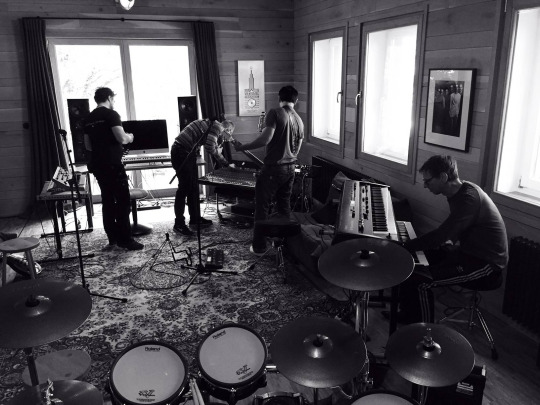
It was decided that the band would work between the festival tours of 2016 and 2017, and that rest periods should be respected. Richard worked on his demos together with Till; the final results were presented to the rest of the band during their meetings and discussed.
As the first result of that creative period, the song 'Ramm4' was introduced during the 2016 tour. Flake commented: “We wanted to show the world that we are still together and that we are creating new music.” To this day, the song hasn’t been officially released, although it was used again as the opening song on last year’s tour.
At the end of 2016, work resumed. In March 2017, Richard mentioned in this interview for the Rammstein in Paris film that at that point, 35 almost-finished songs existed, and that the wait would be worth it. Over the course of the year, these drafts were reduced to 28. Sky van Hoff also mentioned that same year that he would be working with Rammstein. Work on the compositions continued until spring 2018, apparently under a rule of four working days per week (Monday through Thursday). The song “Deutschland” in particular weighed heavily on the band - the lyrics prompted them to repeatedly look back on their own past and exchange their views:“Everyone of us expressed his opinion in detail. All of us talked about our experiences and feelings with respect to Deutschland. Some of us even told stories about themselves that I never heard before.” (Deutschland Photobook)
Recording took place in spring 2018 at La Fabrique Studios near Nîmes in southern France, with recordings made for a total of 16 songs.
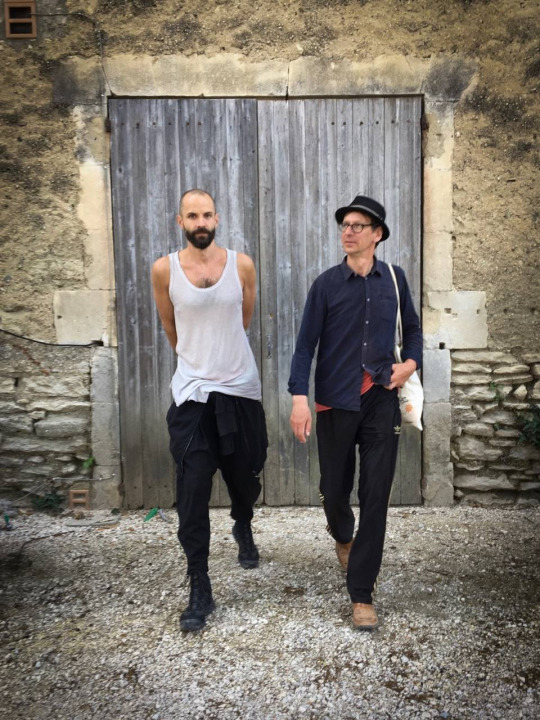

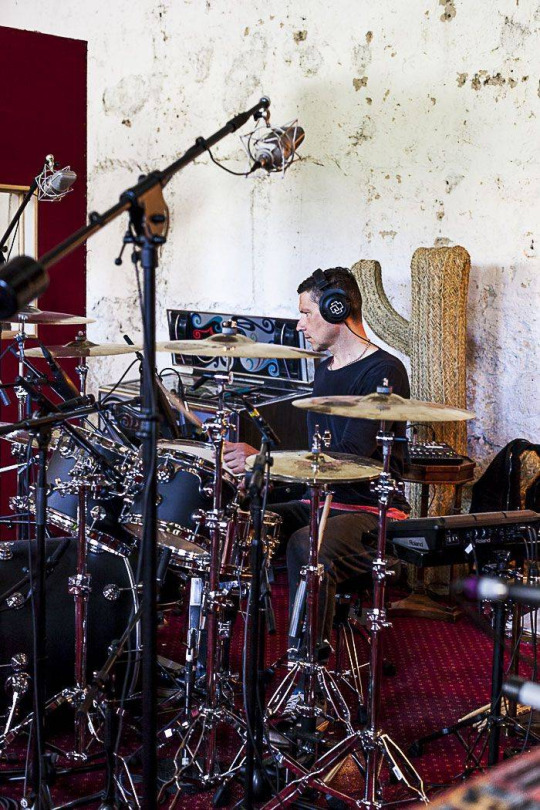
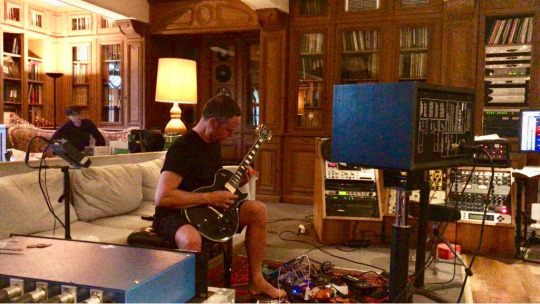
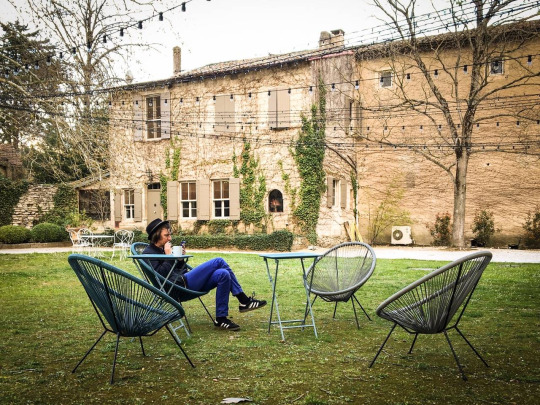
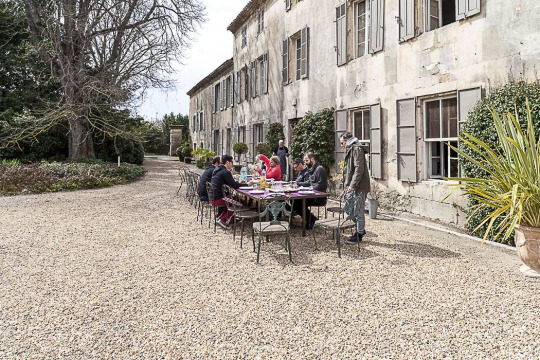
Jacob Hellner was no longer involved, his role was taken over by Olsen Involtini. In late summer 2018, the orchestral and choir parts were recorded in Minsk. In December of the same year, 11 of the 16 songs were mixed by Rich Costey, Olsen Involtini, and Richard in Santa Monica, California.
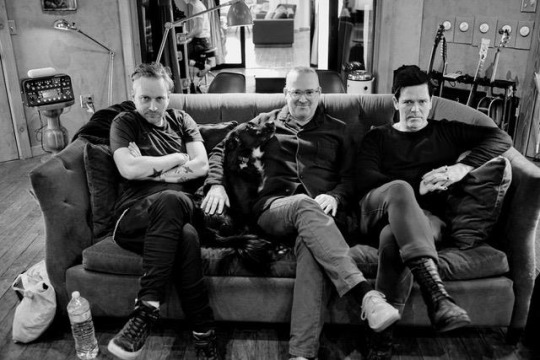
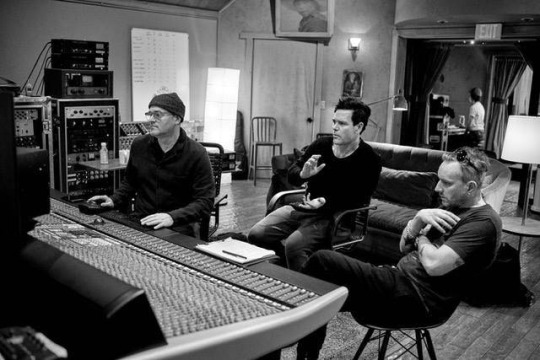
As a teaser for the album, a tracklist with placeholders for letters and durations was released in 2019, hinting at the song titles:
DEUTSCHLAND – 05:26
+ADI+ – 03:00
++++ DICH – 03:00
A+S+Ä+D+R – 03:00
++X – 03:00
P+PP+ – 03:00
+AS +CH ++E++ – 03:00
+IA+AN+ – 03:00
WE++ WE+ – 03:00
+A++OO – 03:00
+ALL++ANN – 03:00
Audio snippets, each featuring a short instrumental segment from one of the songs, gave further clues to the tracks.
Starting on the album’s release day, a large truck toured various cities in Germany, Poland, the Netherlands, Belgium, and Austria. At each stop, visitors were given a special code they could use to win 2x2 tickets to the sold-out shows of the 2019 Europe Stadium Tour.
The album itself was visually dominated by the colors white and white. A making of video was released showing the photo shoot, which featured photographer Jes Larsen working with the band.


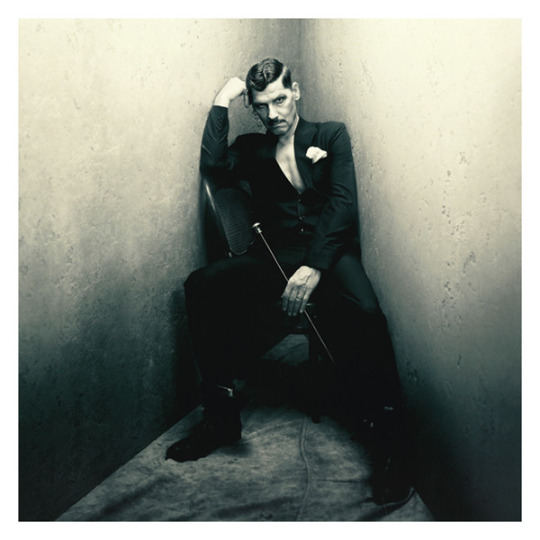
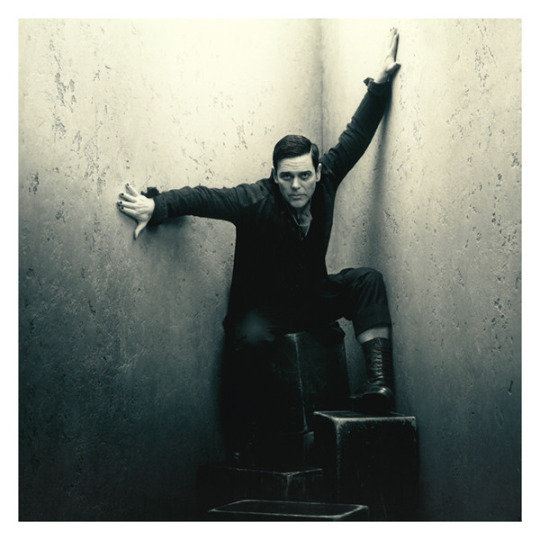

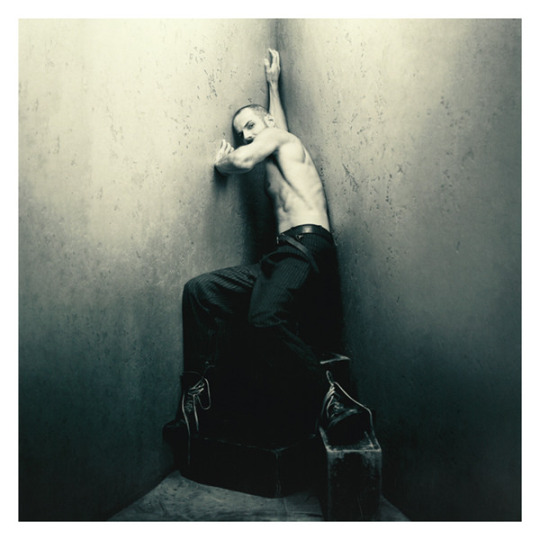
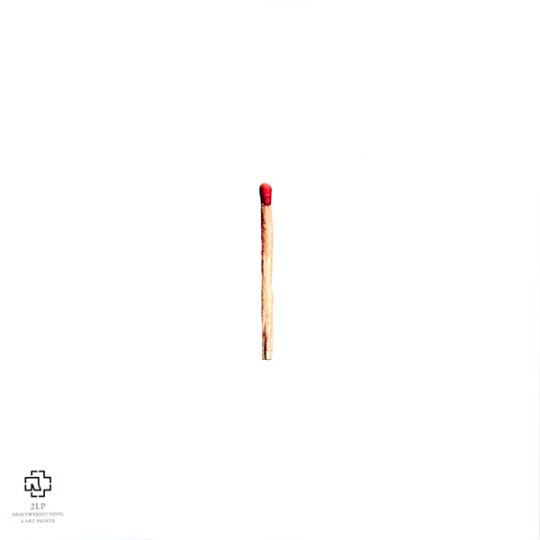
More little facts:
If you ordered the album in Germany from Saturn or MediaMarkt, you received a free promotional T-shirt, which has still never been officially released. Another special promotion took place in Long Beach, California: if you bought the album at the store Fingerprints Music, you had the chance to receive a free Rammstein logo tattoo.
The song “Deutschland” triggered a wave of outrage in Germany, as it was frequently misinterpreted and the music video was considered offensiven - particularly due to its references to the Holocaust.
The music video for “Radio” was projected onto a building wall in Berlin-Mitte on April 25, 2019, at 8:55 p.m., shortly before the album’s release. About 1000 fans attened the presentation:
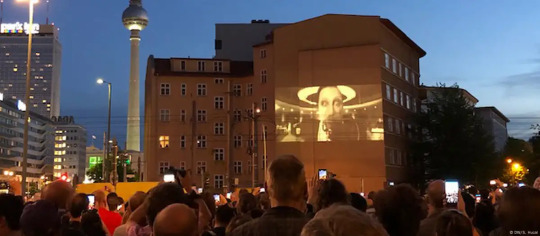
Olsen Involtini also took on the role of mediator during the creative process. Richard reported the following: “Because of his presence, the energy between Paul and I changed dramatically. I don’t know why. It’s almost like couples therapy. It’s not about going there and getting advice from a therapist. It’s more about if you go to a therapist and you’re sitting in front of another person, you’re listening to what the other person is saying, and while they’re saying something, you’re thinking of strategies on how to fight against it. So, all of a sudden, I was listening to what he was saying and he was listening to what I was going to say. Individually, we are very, very different. Black and white. If he says ‘Yes,’ I say ‘No.’ It’s always the same story. But somehow we need that for the Rammstein universe.” (Revolver)
Sources: rammsteinworld rammwiki affenknecht discogs dw.com kerrang
#almost forgot this was in my drafts over all the weird stuff that's happening lately#happy birthday untitled!#rammstein#till lindemann#richard kruspe#paul landers#christoph schneider#flake lorenz#oliver riedel#album anniversary#quotes & interviews#research & rammsplaining
79 notes
·
View notes
Note
My thoughts on the audio are that I genuinely cannot come up with a sane explanation. I don't think Liam was necessarily in the studio but he has to be talking about him, right? Like IDK there was some visual effect or whatever, literally who else could be the cunt Noel doesn't want to see. Beyond which I am not a proper scholar so please let me know if I'm way off base but I have an extended divorce theory that goes:
2009: Breakup, they're both big mad for a minute
201?-2012: They are texting and like, sending their kids to the same school. possibly the most normal they've ever been.
2013-2015: Liam blows his entire life up and is extremely sad about the consequences of his own actions. I saw actual video footage of Noel saying that he's shocked beady eye broke up and he's actually sweet about it and tells Liam not to give up? who is this man. anyway while Liam will later claim Noel wasn't there for him during the divorce but as a general rule they're much nicer about each other when they're divorcing other people. this is where I become extremely conspiratorial because at some point they had to get the documentary off the ground and a second, more personal breakup is clearly going down around this time. I believe in their ability to deeply wound each other by playing cryptic telephone through the press but I think it genuinely makes more sense if they were actually talking, perhaps about a potential reunion.
2016-2020: supersonic documentary and also (coincidentally?) the apocalypse. Liam launches his solo career, Noel hates it and is pretty relentlessly mean about it and about Liam more generally. we are gearing up for the kind of tweeting/podcast commenting where you call your brother your ex-wife. I think this is also when Noel decides to drag Molly into it for some reason. Liam says publicly that he thinks Noel was waiting for him to hit rock bottom so he could be magnanimous about saving him. whether he thinks this because of something concrete noel did or said or because he's liam is a mystery. the Anais incident goes down, the vogue article comes out. we are never ever getting back together for real this time. noel says a bunch of normal and well adjusted stuff about how he wants Liam to die in a self driving car crash with Donald Trump and seeing his face makes him want to shoot up a MacDonalds.
2020-2022: the pandemic saves oasis. I'm serious. they're both stuck sitting at home with nothing to distract them from themselves and think of brighter days. apparently being trapped in a house with noel is genuinely so unbearable that Sara calls it quits (in the matter of Sara v. Noel I'm on her side). presumably this was cause for at least some self reflection. divorce is a lonely and difficult experience, sara and liam seem to legit hate each other in a way that would be a barrier to reconciliation (in the matter of Sara v. Liam I am also on her side but less so bcs she didn't get trapped in a house with him). at the same time Liam pulls off Knebworth 2022, demonstrating he can handle big events without headcasing (and without noel, and he will be doing those big events solo or otherwise). at this point I genuinely think it was just a matter of time before we were back, baybeee! let's hope they can keep it together.
bro your brain is so huge and deeply wrinkled, profoundly agree with all of this. why you on anon when your opinions are so correct and you could be sharing them with us directly tbh 👀.
but yeah, 100% covid saved oasis lmao. noel's divorce saved oasis. noel's miserable midlife crisis (ongoing) saved oasis 🥰🥰🥰. and it juuuuuust really seems like all those insane highs and lows that went on publicly in the media between them over the years probably, or at least quite possibly, had irl personal catalysts rather than just a general holdover of ill will from the 2000s. there are so many random little times one or both of them casually mentioned they were in contact, and any one of those instances can be disregarded, but when considered in retrospect from a collective standpoint..... AWFULLY DAMNING!!!
lots more to say about all of this actually, every point you've made is legit af and could be expounded upon for a hundred years, but it's midnight and im coming down with a flu (punishment for some kind of hubris im sure), so. thank you for all of this and goodnight 🙏
75 notes
·
View notes
Text

'Sinners' is the argument for why Hollywood needs DEI
(Be warned: This essay discusses plot points from the new movie Sinners)
Sitting in a movie theater on a Sunday, watching the grand spectacle that is Ryan Coogler’s horror movie/tone poem Sinners, I couldn’t stop chuckling.
Not just because the movie has its funny spots, including a great moment where one of Michael B. Jordan’s characters shoots a guy in the behind who is trying to rip him off. And not just because he’s crafted a story about vampires in the Mississippi Delta that feels both vibrantly fresh and achingly familiar.
I was laughing because Coogler, in crafting a successful film that is not just rooted in Black and non-white culture, but is a carefully-crafted, earnestly made love letter to it, he has provided the strongest argument yet against the toxic fiction that more diversity, equity and inclusion in a democracy is somehow bad.
youtube
Even as weak-kneed film studios and profit-focused media companies roll back DEI programs and offer mealy mouthed equivocations in the face of Donald Trump’s war on diversity, Coogler has stepped forward with a boldly creative film which simply proves, through its excellence, the value that comes from unleashing the creative spirit fortifying people of color.
Sinners is a movie which wears its themes on its sleeves. The vampire who threatens the rural honky tonk owned by Jordan’s characters in the 1932-era Jim Crow South is white. And he’s drawn to the place by the bold, pulsating creativity of Miles Caton’s Sammy “Preacher Boy” Moore -- a spellbinding blues singer whose talents are connected to a continuum of Black musical creativity which cuts across time and geography. The way Coogler illustrates this, with a magical musical sequence set in the honky tonk which includes a Black funk rock guitarist and African drummers, is one of the film’s most impressive sequences.
“In a lot of ways, Africa explained Mississippi to me,” Coogler told journalist Jelani Cobb for a feature story in The New Yorker, describing the impact of his first trips to Africa. “I realized, ‘All right, African Americans are extremely African.’ We may be more African than we know. With this film it was, like, ‘Oh, we affected this place [Mississippi].’ We brought Africa here.”
Jordan plays twins, named Smoke and Stack, who return to the Delta after years in Chicago, fortified with money earned from up North, hoping to build a life for themselves in their old hometown. But the evil and soul-killing exploitation of the white man’s world, embodied in the mysterious vampire drawn by Preacher Boy’s gifts, comes calling to threaten their dream.
It is a tale as obvious and clearly drawn as the wide vistas Coogler captures with his IMAX and Ultra Panavision 70 cameras – a pioneering combination which makes the film such a visual treat. Here’s a video where Coogler explains some of his production choices.
youtube
But because the writer/director is such a talented craftsman, we drink in every permutation of the story, even though we mostly know exactly where it is going. And because Coogler has built his brand around elevating Black centered stories which make room for other cultures, moving through Sinners also feels like a family dinner which makes room for everyone, from Native American vampire hunters to Chinese shopkeepers.
So why did Hollywood not see this success coming?
I have a few thoughts:
Hollywood still struggles with stereotypes dressed up like industry facts. Years ago, Hollywood executives would explain their reluctance to fund big movies centered on Black people and culture by saying the movies “didn’t travel,” or didn’t perform well overseas. But plenty of movies have busted that paradigm, from Coogler’s own Black Panther films, to Hidden Figures, Moonlight -- even Will Smith’s 2013 science fiction boondoggle After Earth made three times as much money overseas than in America, earning nearly $250 million worldwide. Too often, I think Black-centered projects have suffered from assumptions that audiences somehow cannot make the leap that Black audiences often do – seeing themselves in stories told about people who don’t look like them.
(Even Ben Stiller noticed Hollywood’s myopia when it came to Sinners.)

Hollywood has a tough time giving Black filmmakers the same respect as great white auteurs like Quentin Tarantino and Christopher Nolan. I remain mystified by the buzz over Coogler’s deal with Warner Bros. which allows rights for the film to revert to him after 25 years. At a time when there is more content in front of consumers than ever – and debt-laden Warner Bros. Discovery needs a movie hit badly – why wouldn’t the guy who directed the most profitable movie in 2018 cut a deal to participate in the profits of his current film and own his intellectual property after it has been fully exploited by the film studio? Especially since other filmmakers, like Tarantino and George Lucas have managed to craft similar deals? Near as I can tell, Lucas’ ownership of Star Wars didn’t kill movie studios. So why would Coogler’s eventual ownership of Sinners?
Too much of the press which reports on Hollywood proceeds from the perspective of the people who run and own everything. One of the underappreciated consequences of the hollowing out of modern news outlets is that reporting on Hollywood has become much more specialized. So trade publications and hyper-focused news outlets like The Wrap, Deadline, The Hollywood Reporter, Variety and Puck are leading coverage of Hollywood issues. And too many of these outlets, chasing a wealthy and monetizable audience of Hollywood players, create coverage which reflects their assumptions and biases back to them. I remember seeing this many years ago, when Deadline ran an ill-considered piece asking if the push for ethnic diversity in casting TV shows was “About Time or Too Much of Good Thing?”
This is, of course, something we’re struggling with in the wider world now, thanks to the anti-DEI fairytales spun by the Trump administration and propaganda-filled outlets like Fox News Channel. It is tough to convince Hollywood that, by making more inclusive and diverse TV shows and films, you’re actually making them less predictable, more appealing to a wide range of consumers and more likely to involve super talented people who might not be white.
In other words, you make them better.
Fortunately, Coogler has given us Sinners, a film which makes all those arguments and more in an engrossing, entertaining movie that will likely become one of the most profitable projects of the year.
What more proof does Hollywood need that DEI is G-R-E-A-T?
22 notes
·
View notes
Text
Red Dragons; Or, the problems of adaptation and the early serial killer procedural
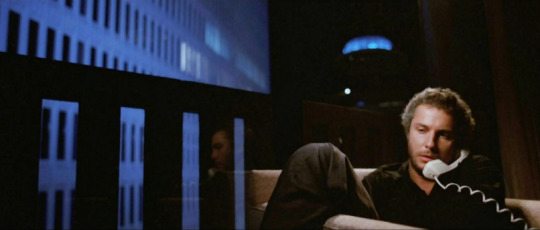
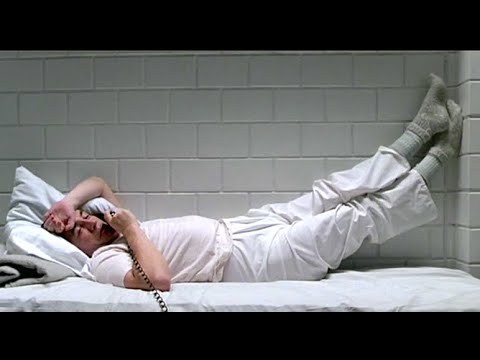
Red Dragon (1981) has the distinction of being the most frequently adapted Thomas Harris novel in the Hannibal Lecter "quartet." Despite the universal recognition of Jonathan Demme's Silence of the Lambs (1991), with iconic performances from Jodie Foster and Anthony Hopkins, and the more recent cult status of the series Hannibal (2013), which draws from all four books, it's Red Dragon, in some ways the most "obscure" Thomas Harris novel, that has lived three, arguably four, different lives onscreen over three decades.
Manhunter, visually, is an 80s noir feast set to atmospheric synths, but works within the newly established slasher genre as it attempts to make its own mark. The 1980s were truly the decade of the slasher flick, or the first wave thereof, and Red Dragon had to contend with expectations set up by the likes of Freddy Krueger and Michael Myers. Although this isn't a write-up about the history of slasher films, the basic premise I am going with is that the early slasher serial killer was portrayed as monstrous and, compared to our favorite killers today, one-dimensional antagonists. When I think about the origins of the slasher genre, I always think about the way the ineffectual psychologist in Halloween (1978) describes his former patient's "devil's eyes," behind which lived something "purely, simply evil." Dr. Loomis is dogged in his determination to impress upon the local authorities that Michael Myers is a force of nature who is unreachable by psychology, the study of the human mind. Furthermore, the slasher flick was unconcerned with the elements of the procedural: like in other horror subgenres, law enforcement are disposable foils that demonstrate the danger of the "monster" and the vulnerability of his targets and/or come in at the end to mark the conclusion of the spectacle (until the sequel, that is).In many ways this just seems like a quirk of history. I've been operating under the assumption that when Red Dragon came out in 1981, Thomas Harris introduced a type of story to a media landscape that had scant precedent for the serial killer mystery or procedural, distinct from the related nascent slasher horror subgenre, unlike today when a plethora of "murder shows" benefit from the success of this formula. Hannibal "the Cannibal" Lecter, the ur-murderer of the Thomas Harris fictional universe, became a cultural archetype that looms over modern crime television and film as he does over the investigations of beleaguered law enforcement officials in both Red Dragon (1981) and Silence of the Lambs (1988). When Michael Mann brought this first "Hannibal" novel to the screen in 1986, he too was breaking ground, to mixed reactions. Manhunter (1986), which lamentably lost its "Red Dragon" title due to studio publicity decisions, is both ahead of and a product of its time.
Manhunter, visually, is an 80s noir feast set to atmospheric synths, but works within the newly established slasher genre as it attempts to make its own mark. The 1980s were truly the decade of the slasher flick, or the first wave thereof, and Red Dragon had to contend with expectations set up by the likes of Freddy Krueger and Michael Myers. Although this isn't a write-up about the history of slasher films, the basic premise I am going with is that the early slasher serial killer was portrayed as monstrous and, compared to our favorite killers today, one-dimensional antagonists. When I think about the origins of the slasher genre, I always think about the way the ineffectual psychologist in Halloween (1978) describes his former patient's "devil's eyes," behind which lived something "purely, simply evil." Dr. Loomis is dogged in his determination to impress upon the local authorities that Michael Myers is a force of nature who is unreachable by psychology, the study of the human mind. Furthermore, the slasher flick was unconcerned with the elements of the procedural: like in other horror subgenres, law enforcement are disposable foils that demonstrate the danger of the "monster" and the vulnerability of his targets and/or come in at the end to mark the conclusion of the spectacle (until the sequel, that is).
Manhunter, and Red Dragon generally, is not a slasher flick. In fact, beyond the deliberately provocative reporter Freddy Lounds and a few men with barely any screen time who are killed off in brief fight scenes, the Great Red Dragon doesn't kill anyone at all. At the very least, no one is murdered in his signature serial killer style. The ritualistic murders occur before the film (and novel) begins, and the narrative revolves around understanding the mind of the serial killer and preventing him from killing again. At the same time, the conventions of the slasher film seem to limit the directions the film can go. Both Francis Dolarhyde and Hannibal Lecter (or "Lecktor") in the film have fairly opaque inner lives and limited screen time, while Thomas Harris notably does delve into the mindset and motivations of the "psychopath," positioning the killer as a subject of psychology, rather than an exception to it.
Furthermore, Manhunter's revised ending reframes one of two major female characters as a recognizable "final girl," and relegates the other to only existing in Will Graham's "happy ending," out of reach for the killer. This is the opposite outcome of the actual ending in the novel, and always seemed a bit tacked on to me, and not for artistic reasons. Will Graham can't actually end up broken and haunted because there has to be a clear demarcation between the serial killer "monster" and the "real" people who survive him. Blurring that distinction is, arguably, the "point" of Red Dragon. Michael Mann, perhaps, couldn't adapt the novel's conclusion "faithfully" because the conventions of this kind of psychological thriller weren't established, and did the best he could, introducing new building blocks for the "serial killer" archetype but not successfully pitching them to the wider public. Manhunter was not a financial or critical success upon its release, and refining the Thomas Harris "blueprint" was left to Jonathan Demme's Silence of the Lambs (1991), which made the strategic and hugely significant choice of allowing Hannibal Lecter to become a breakout character.
The next adaptation of the novel Red Dragon has seemed to me, frankly, like a bit of a cash grab. The 2002 Brett Ratner film, starring Edward Norton and Anthony Hopkins, capitalized off of the success of Silence of the Lambs and the release of a new Thomas Harris Hannibal Lecter novel. This film was for those who missed Manhunter in the 1980s, which many did, and those who considered a prominent Hannibal Lecter played by Anthony Hopkins essential to an adaptation, which many also did. The most recent adaptation of Red Dragon is the cult hit drama Hannibal (2013), which focuses on the main characters of the novel, Hannibal Lecter and FBI profiler special agent Will Graham, and can arguably be seen as two different adaptations of the novel. Both of these more recent adaptations are more coherent and recognizable as exemplars and/or subversions of the serial killer procedural, playing off of the tropes introduced to the genre by the source material itself, like a particularly grizzly and morbid ouroboros.
So, we have many points of data to consider if we wanted to determine what makes a good adaptation of the novel Red Dragon.
Ironically, for a story that laid important groundwork for a whole subgenre of film and TV, Red Dragon is hard to adapt and definitely hard to update. (So is Silence of the Lambs for that matter, but that is a whole other kettle of fish.) To my mind, the main two difficulties stem from both a strength and a "weakness" of the original novel.
A strength: Harris takes advantage of contemporary technology to create a clever mystery at the center of the novel. The problem: this particular bit of technology was only truly at home in its first 1986 adaptation, Manhunter. Both Red Dragon (2002) and Hannibal (2013) had to make compromises to adapt the central plot device. Red Dragon (2002) avoids the issue by simply setting the film in the 1980s, relying on the audience's knowledge of VHS technology of that time, which, since it was 2002, was more or less assured for an R-rated movie. Hannibal (2013) sidesteps the issue more or less entirely by making the "mystery-solving" pieces functionally irrelevant. (At one point, Hannibal Lecter makes a dismissive reference to the killer using "social media" the way the original story used VHS and the matter never comes up again.) To date, this central plot twist has never been successfully adapted for contemporary audiences in the 2010s - or 2020s for that matter. The 2010s show itself, in its choices, implicitly makes the argument that the technical "mystery" elements of novel weren't really all that important to its overall message. Depending on your point of view, this argument is successful. However, this argument also depends on the irony that the creators of the show can dispense with the set pieces of the serial killer procedural and take artistic license because the source material introduced those expectations into the genre to begin with. Tradeoffs all around.
Another challenge to adaptation is sometimes considered a "weakness" of the book: after the real "plot" of the novel vis a vis Will Graham's hunt for the "Tooth Fairy" begins, Harris makes the bold choice of adding the point of view of the serial killer du jour himself, diving into the eponymous Red Dragon's motivations and experience, which almost takes place in a parallel universe apart from that of Will Graham, Lecter, and the BSU/BAU until both narrative threads collide in the climax. The problem: this choice "derails" the suspense of the whodunit and adds character development for a relative stranger to the reader. Every adaptation of Red Dragon changes the structure of the plot so that the parallel storyline of Francis Dolarhyde, the Red Dragon, is pared down and interspersed with the main narrative (usually) earlier on. Every adaptation has decided that Thomas Harris's precise plot structure isn't actually essential. This judgment call is also ironic: Thomas Harris apparently "flubs" the standard conventions of the serial killer procedural that did not yet exist because he was in the middle of inventing them.
But, we may ask, isn't this the nature of adaptation? The answer: of course it is. Adjusting plot mechanics based on the period of the adaptation and restructuring the pacing for film/television are some of the most basic changes one can make when adapting a book for the screen. However, that does open up interesting questions of theme and intent. What is essential to the Red Dragon story? What is it, in the end, all about?
Leaving aside all caveats about the subjective nature of interpretation or the possibility of a work being "definitively" about anything, I believe there are two broad interpretations of the novel and all existing adaptations favor one or the other.
Red Dragon is a novel about how much monster there is in a, well, man and vice versa: the fate of the soul is at stake. This is a clear theme of Will Graham and Hannibal Lecter relationships in every iteration: to catch a particularly "monstrous" killer requires understanding said killer, but if you understand them too well, what does that say about you? And, more importantly, where does that leave you? (In the original Will Graham's case, nowhere good, with a broken marriage and an existential crisis, or, when we catch up with him in the sequel, in the Florida Keys, now a miserable drunk. For the modern Will Graham of the 2010s series, TBD.) Empathy itself instills horror, which is a fairly complex idea to explore in the late 1970s when Thomas Harris was writing the novel. (In fact, I will always find it remarkable that Thomas Harris had the foresight to research the methods of criminal profilers at the FBI at the beginning of the discipline and the BSU itself, getting in on "the ground floor" for better or worse for horror fiction and actual forensic psychology.) It's also very cross-media, as identification with violence on screen (and the "male gaze" itself) were emerging as key features and problems of film available to critique. The focus on "video" and boundaries between self and other in the novel seem very prescient.
Alternatively: Red Dragon is a novel about the limits of personal transformation. Thomas Harris seems preoccupied with the idea of ritual murder as an alchemical process motivated by the desire to become something "transcendent." (While one can see the mystical whimsy in a man thinking he's becoming a dragon, a figment of William Blake's imagination, "Buffalo Bill's" or Jame Gumb's desire to transform "into a woman" in a somehow "not-trans" way in Silence of the Lambs falls egregiously short and reflects more on a failure of imagination on the part of Thomas Harris and his readership than anything else.) I find the metaphysical aims of these serial killers interesting for two reasons. First, sexual sadism is de-emphasized as a motive, which is not typical of the serial killer archetype of the time: the most prominent serial killers in fiction (such as in early slasher films) kill because of some perverse urge, as an extension of the "evil" men they are or were made to be. Their murders aren't about anything. Both Francis Dolarhyde and Jame Gumb , in contrast, think they are setting out to accomplish something and that the brutality of their actions is beside the point. This is what constitutes their insanity, as this is clearly not true.
The actual nature of their murders and the ugly psychoanalytical implications of their compulsions are the ultimate limitation on their aspirations to "becoming." No matter what they think is going on their heads, they direct their violence toward women, and it is women who ultimately put an end to their reigns of terror. (Molly Graham and Reba McClane in Red Dragon and Clarice Starling, among others, in Silence of the Lambs.) The female characters serve as a "reality check" for the dreamy, bloody men of the books, which is earnestly ham-fisted on the part of Thomas Harris but also significant for the genre. Arguably none of the women in the first two Hannibal novels play the role of "final girl," that is, an "innocent" woman who acts as audience surrogate and restores socially acceptable norms at the end of the film. (The focus on such a "good girl's" experience means you can take a comfortable distance from the murderer and put yourself in the position of "victim." You are also anticipating that she will be spared in some way, which restores a sort of moral balance to the universe: the other victims in some way "had it coming.") In Red Dragon, the active female characters are not sorted into the "virgin/whore" dichotomy: in fact, even the actual sex worker character (Freddy's girlfriend) remains unscathed, and her feelings are more relevant to the other characters than her occupation, humanizing Freddy postmortem. The victims and potential victims, almost all of them mothers, clearly did nothing "wrong" and their sexual objectification is placed squarely on the shoulders of the men watching them. The women left standing at the end of the novels don't just "escape" the killers: they're the ones who put the killers down despite the male characters' inadequacies, and they, unlike a Jason or a Michael Myers, stay down.
Of course, I think both broad themes are very present and active in Red Dragon, and, probably unsurprisingly, Hannibal Lecter is something of a cipher for both threads. If our main concern is coming to terms with our empathy and capacity for violence (or "men's," I suppose), Hannibal Lecter nimbly eludes being a subject of empathy, instead setting himself up as the observer and interpreter of other killers. His insight into other people is certifiably superior: he's literally a renowned psychiatrist. The possibility of a Hannibal Lecter raises the stakes enormously for our own navel-gazing, as we are not just wondering, along with Will Graham, whether the wicked deeds of others might appeal to us, but are actually facing up to the reality that the killer has been beside us as a peer all along, not the subject of scrutiny. If our main concern is the limitations of personal transformation, Hannibal Lecter is a very sharp foil for our doomed killers because while he can easily identify the signs of a transmutation complex, it isn't especially relevant to him personally. Hannibal Lecter doesn't kill and eat people because he's turning into anything. As he famously tells Clarice Starling as she attempts to interview him, "Nothing happened to me. I happened." He already is what he is, rooted in sensual reality - like the women in the books - and he is merely indulging his appetites and aesthetics. This, I think, is why he prevails and why he can make himself at home on the side of our woebegone detective protagonists when he feels like it. Hannibal Lecter is never doomed: he can always happen to you.
Manhunter favors the first tendency, and is not particularly interested in Francis Dolarhyde's "Becoming" as the Great Red Dragon. This allows for a very intense and nuanced meditation on identification and the role of empathy that artistic representations of violence invoke. The focus on "seeing" gains a whole other dimension in the context of film, as there are many interesting things going on with perspective and scene composition. 2002's Red Dragon favors the second tendency, if I had to make the judgment call. Although the film is probably the most "faithful" adaptation of the events of the novel, I do think you can come away from the film not remembering that Will Graham has any particular problem/gift of heightened empathy or that losing himself by identifying with Hannibal Lecter or Francis Dolarhyde was ever a serious possibility. (Even at the climax, when Graham to a "violent" place he ends up taking on the persona of Dolarhyde's abuser, not Dolarhyde himself, which is entirely an invention of the film.) What the film does emphasize is the quixotic journey of Francis Dolarhyde, giving quite a lot of room to his backstory as well as his inner conflict between his deadly, "spiritual" inclinations and his romance with Reba. Also, and most importantly, this is the one adaptation of Red Dragon that actually allows Molly Graham to kill Francis Dolarhyde when he tries to make the Graham family another ritual sacrifice. There's an intentional symmetry in the novel between the murders and Dolarhyde's ultimate demise at the hand of the desirable "mother," which really underlines the juxtaposition between the story Dolarhyde is telling himself and what he's actually been doing.
Perhaps this is me tying a bow on it all by claiming that Bryan Fuller's Hannibal (2013) manages to incorporate both major themes, but I do think it's very interesting to at least think of the series as two different adaptations of Red Dragon. The first adaptation is obvious: the second half of season 3 "does" Red Dragon, and honestly gives fantastic depth to Francis Dolarhyde's inner world and his quest for transformation through death. However, I also think you can view the entire series as a whole as an adaptation of Red Dragon. I say this because the main bulk of the existing seasons of Hannibal cover the period of Will Graham and Hannibal Lecter's relationship prior to Lecter's capture, which is only depicted (in exposition) in the novel. Aside from the incorporation of various plot points and characters from the novels Hannibal (1999) and Hannibal Rising (2006) in season 2 and season 3, one could place the (first) three seasons of Hannibal entirely in the world of Red Dragon. I think this is especially suggested in the first episode, which opens with Will Graham doing a visionary walk-through of a family annihilation that pretty much exactly hearkens back to his first major scene in the novels and the films: later in the episode, Graham's inner monologue about imagination and taste - the first substantive insight we get into the character - is rewritten as dialogue between Graham, Jack Crawford, and Hannibal Lecter. So, even while the plot of the series begins at a different point in time, stylistically, we're back at the beginning of Red Dragon anyway. This interpretation allows for a lot more flexibility if we're looking for major themes coming from the source material. Identification and empathic intimacy are the animating features of the central Will-Hannibal dyad: at the same time, the psychic landscapes Will Graham (and to a lesser extent characters like Alana Bloom or Bedelia du Maurier) explore alongside Hannibal Lecter are tied up in questions of transformation and limitation.
In the series, Lecter not only pinpoints the urges to "become" in other killers but also becomes deeply invested in Will Graham's capacity for metamorphosis as an expression of identification and intimacy. If, as I've suggested previously, Hannibal Lecter exists as a grounded corrective to the soulful longings of murderers who wish to change through the deaths of others, this seems like a contradiction on its face. However, if we take this interpretation of Hannibal Lecter in the novels into our viewing of the series, the tension between Hannibal and Will sharpens into a very intimate exchange of knowing and refusing to know one another. Hannibal Lecter seems to have no interest in Will Graham becoming something or someone else via the alembic of murder. When he tempts Will, he is not (ultimately) encouraging the profiler to look away from the world to some impossible dream that would mark him for death like the other murderers they hunt together. Hannibal Lecter is very interested in Will Graham becoming a killer, that is, embracing all of who he already is with clarity and insight, which is a transformation rooted in psychology and is also entirely possible. Will then resists self-knowledge, or bringing his self-knowledge into the material world. Hannibal resists his own identification with another human being, and realizes (a bit too late) that there may be a way to bring Will down to Earth (and closer to him) without destroying him, as he inevitably does - gleefully - to his other proteges and projects.
No adaptations of Red Dragon have embraced the novel's ending. In the end of the original novel, Will Graham is left in the hospital, resigned to the fact that he's lost his wife and stepson, and drifts into a drug-induced dream state, where he doesn't dream of "Molly leaving" or Dolarhyde, but rather visits a memory from the time shortly after he'd killed Garret Jacob Hobbs. He remembers visiting Shiloh, the site of a particularly bloody battle in the American Civil War, and has an epiphany. At the time, he'd considered the battlefield "haunted," but now realizes that it is, in fact, "indifferent." In the natural world, there is no mercy, "we make mercy": "There is no murder. We make murder, and it matters only to us." Graham accepts that he has the capacity to "make murder; perhaps mercy too." Murder, however, is what he understands. He wonders if "vicious urges" in humanity and the "dark instinctive knowledge" of those urges could act as a vaccine against the "virus" of violence, allowing for the possibility of civilization that has "overgrown the basic reptile brain." He doesn't settle on an answer, but does believe he was wrong about Shiloh. "Shiloh isn't haunted - men are haunted. Shiloh doesn't care."
Granted, this would be hard portray on screen. A filmmaker would have to resort to voice over, perhaps, or merely suggest where Thomas Harris declares. Another option would have Will's epiphany take the form a letter to Hannibal Lecter, an answer to a message Graham never receives. In this letter, which Jack Crawford destroyed, Lecter says we live in a "primitive time," "neither savage nor wise. Half measures are the curse of it. Any rational society would either kill me or give me my books." He wishes Graham a "speedy convalescence," and hopes "he will not be too ugly" after recovering from the wounds the Great Red Dragon gave him. "I think of you often," he writes, and then writes his name. Lecter believes "half measures" are the true poison: Graham, if he knew his dream was a reply to his counterpart, would perhaps take the position that "half measures" are the antidote, a strategic ambivalence that, perhaps, makes mercy as possible as murder. Such a reply, however, would lack conviction. It would, however, betray that in the end this is a conversation vulnerable to distance and time and that there is no appeal to a higher power or state of enlightenment, just to one another. Perhaps the last scene of "The Wrath of the Lamb," the final episode of season 3 of Hannibal, is the closest we'll come to seeing a cinematic portrayal of this conclusion. The profiler taking the serial killer into his arms, where they hold each other like lovers, and then throwing both of them off a cliff and into the sea. Not a half measure at all.
In the meantime, all of these versions of Red Dragon are worth a look.
#nbc hannibal#hannibal lecter#will graham#manhunter 1986#red dragon#thomas harris#silence of the lambs#slashers#francis dolarhyde#murder husbands#essay#fadserver#hannibal meta
95 notes
·
View notes
Text
Animators Research part 1
Lets speed run all of this i had already spoken with trishan n he had told me to choose one main animator or 3 animators well where's the fun in just doing one so here's 3.
Round 01- Begin!

Animator 01- Vivienne Medrano (Vivziepop)
Vivienne Medrano (Vivziepop): The Queen of Hell's Animation Scene
I've spent WAY too many hours recently going down the Vivziepop rabbit hole, and I'm absolutely not sorry about it. If you haven't experienced her chaotic, colorful universe yet, allow me to introduce you to animation's deliciously demonic darling.
Who is Vivziepop and Why Should You Care?
Vivienne Medrano (known online as Vivziepop) is this absolutely BRILLIANT animator, director, and comic artist who's basically revolutionizing adult animation right before our eyes. She was born and raised in Frederick, Maryland and fun fact she is of Salvadoran descent. Vivienne studied at the School of Visual Arts in New York City and graduated in 2014 and has since created her own animation empire ever since.
Vivziepop first gained significant attention with her animation "Die Young" (a Kesha music video animatic) back in 2013. However, it was her original character Charlie Morningstar—a literal princess of Hell with a heart of gold—that would eventually catapult vivzie into animation stardom.
Her big breakthrough came with "Hazbin Hotel," an adult animated series about Charlie trying to rehabilitate demons in Hell. What started as an independent pilot in 2019 became this massive internet phenomenon that eventually got picked up by A24 and Prime Video in 2024. Alongside "Hazbin Hotel," she also created "Helluva Boss," another adult animated series set in the same universe that she releases independently on YouTube both series being canonically in the same time though being several years apart.
What makes Vivziepop so special is how she's managed to create this distinctly adult animation with complex characters, LGBTQ+ representation, and mature themes while maintaining complete and full creative control over her story. She basically said "I'm going to create the exact animation I want to see in the world" and SHE DID IT, with building an incredibly passionate fanbase along the way over the years as the two series grew.
That Mind-Blowing Art Style Of Hers Is Something Else
Vivziepop's art style is so unique in animation right now that it's INSTANTLY recognizable for being one of a kind of our time.
These sharp, angular character designs with exaggerated proportions that somehow feel both vintage and ultra-modern giving the feel of both old and new art styles
A color palette that SCREAMS with vibrant reds, pinks, and contrasting colors that practically burn themselves into your retinas (in the best way possible)
Incredibly fluid, theatrical animation that draws heavy inspiration from classic cartoons of the 1920s-30s while feeling totally contemporary and towards the newer generation as well
This perfect blend of cute and horrifying—characters can shift from adorable to nightmare fuel in a single frame( Especially Alastor)
Her style is like this perfect cocktail of influences: you can see traces of old-school Disney and Fleischer Studios mixed with anime dynamics, Gothic aesthetics, and underground comic vibes its honestly like a smoothie of different art styles blended into one. But what's incredible is how she's synthesized these inspirations into something that's unmistakably HERS and HERS alone making it one of a kind.
Her animation isn't just visually striking—it's purposeful. The exaggerated expressions and movements serve her storytelling brilliantly, especially when dealing with the emotional extremes her characters experience ( like the story behind stolas and blitzo). And the way she uses color to establish mood and character personality is absolutely masterful and just overall just pleasing to watch that it keeps you on your toes on what comes next.
Why Her Art Style Resonates With Me (and would probably keeps you up at night too)
There's something about Vivziepop's art that hits me just right in the soul, and I've been trying to figure out exactly why I'm so obsessed with her ever since I found her accidentally
First, there's this unapologetic INTENSITY to everything she creates. In a world that often tells us to tone ourselves down, her art screams, laughs, and cries at full volume. It's this visual permission to embrace the messy, complicated parts of ourselves that society often asks us to hide.
The contrast between cute and macabre in her work speaks to that duality we all have—the parts of ourselves that are soft and vulnerable existing alongside our darker, more complex sides. Her demons struggle with redemption, morality, and love in ways that feel shockingly human despite their monstrous appearances n relatable.
There's also something deeply liberating about her willingness to create adult animation that doesn't rely on shock value alone. Yes, there's profanity, violence, vulgar languages and adult themes, but they're in service of genuine character development and social commentary. Her work treats its audience as intelligent enough to handle complexity.
And can we talk about how she portrays LGBTQ+ characters? It is just immaculate the way she adds casual inclusion of diverse sexualities and gender expressions without making them the sole defining trait of characters feels revolutionary, especially in animation. Seeing queer characters exist as full, complex beings in her vibrant world feels like the representation we've been starving for.
Perhaps most importantly, there's an undeniable authenticity in her work. Every frame screams "this is exactly what I wanted to create" rather than something designed by committee. In an era of algorithms and focus groups, art that follows a singular, uncompromising vision feels increasingly rare and precious.
Vivziepop's animation reminds me that there's still room for the weird, the wild, and the wicked in art—that sometimes the most resonant creations are the ones that refuse to file down their sharp edges.
If you haven't fallen down the Vivziepop rabbit hole yet, prepare yourself for sleepless nights of binging "Helluva Boss" episodes and obsessively analyzing "Hazbin Hotel" frame by frame. Her hell is more colorful, honest, and strangely hopeful than most depictions of heaven, and I, for one, am happy to be damned.

8 notes
·
View notes
Text

Happy Dragon Age release day!!!
📸
Studio:
16 notes
·
View notes
Text

#pixar#pixar animation studios#the art of pixar#disney#pixar art#art#concept art#visual development#monsters university#monsters university 2013#matthew luhn
25 notes
·
View notes
Text

Brighten the corners are Frank Philippin and Billy Kiosoglou, who established their studio in 1999.
I used to be a design student – 50 graphic designers then + now The book we authored, edited and designed was published in February 2013 by Laurence King Publishing in London. It looks at the process a designer goes through in finding their ‘voice’. We asked fifty graphic designers to give us the low-down about their student days and their professional lives. A piece of their college work is shown alongside an example of current work. Each designer also offers a key piece of advice and a warning. Topics addressed include how ideas are researched and developed; design and other cultural influences, then and now; positive and negative aspects of working as a designer; motivations for becoming a designer; and whether it's really possible to teach design.
Awarded a Bronze Nail at the ADC (Art Directors Club) für Deutschland and a Certificate of Typographic Excellence at the TDC (Type Directors Club) in New York. Reviews on eye Magazine, Brain Pickings, It’s Nice That, Fast Company Design and other places. Order online at Laurence King, amazon.co.uk, amazon.com, amazon.de. In 2014 a Korean edition of the book was published by ag books and in 2016 a Chinese edition was published by HuaZhong University of Science & Technology Press.
Contributions From Andreas Gnass (U9 Visuelle Allianz), Andrew Stevens (Graphic Thought Facility), Annelys De Vet, António S. Gomes (Barbara Says...), Ben Branagan, Bernd Hilpert (Unit-Design), Brian Webb, Christian Heusser (Equipo), Daniel Eatock, Danijela Djokic (Projekttriangle), Emmi Salonen (Studio Emmi), Éric & Marie Gaspar (Éricandmarie), Fons Hickmann (Fons Hickmann M23), Hans Dieter Reichert (Hdr Visual Coomunication), Holger Jacobs (Mind Design), Hoon Kim (Why Not Smile), Hyoun Youl Joe (Hey Joe), Isabelle Swiderski (Seven25), James Goggin (Museum Of Contemporary Art, Chicago), Jan Wilker (Karlssonwilker), Julie Gayard (Jutojo), Kai Von Rabenau (Mono.Graphie), Ken Garland, Kirsty Carter (A Practice For Everyday Life), Kristine Matthews (Studio Matthews), Lars Harmsen (Magma Brand Design), Laurent Lacour (Hauser Lacour), Liza Enebis (Studio Dumbar), Lucinda Newton-Dunn (Space-To-Think), Maki Suzuki (Åbäke), Marc Van Der Heijde (Studio Dumbar), Margaret Calvert, Marion Fink, Martin Lorenz (Twopoints.Net), Matthias Görlich (Studio Matthias Görlich), Michael Georgiou (G Design Studio), Nikki Gonnissen (Thonik), Oliver Klimpel (Büro International), Paul Barnes, Prem Krishnamurthy (Projects Projects), Renata Graw (Plural), Richard Walker (Kk Outlet/Kesselskramer), Sandra Hoffmann Robbiani (Visual Studies) , Sascha Lobe (L2m3), Stefan Sagmeister (Sagmeister Inc.), Sven Voelker (Sven Voelker Studio), Tim Balaam (Hyperkit), Urs Lehni (Lehni-Trüb, Rollo Press), Yasmin Khan (Counterspace), Yves Fidalgo (Fulguro).
They also designed the website for Anish Kapoor
19 notes
·
View notes
Text









Typography Tuesday
QUNZ - Lego Typeface
Since 2016, Dutch printmaker and educator Martijn van der Blom (b. 1973) has been working on designing a Lego typeface he calls QUNZ. He states:
I approach letters as a form of architecture, each letter is like a building. . . . I decided to give QUNZ a more open and playful character, This created space to fine creative solutions to thick and thin lines, diagonals and serifs.
Van der Blom designs while printing and most of his visual research happens in the printing process. He explicitly leaves room to design with the opportunities that present themselves in the act of printing. One result of this way of working is that certain compositions are not taken apart. Elements that have proven themselves are preserved:
I don't break down the compositions anymore. I leave them intact and store them in a dedicated typecase, just like all the other type in the studio.
The letterforms shown here from the second edition of Print & Play The Art of LEGO Letterpress by van der Blom and visual artist Roy Scholten, published in Dutch and English in Hilversum, Netherlands at tacit.studio in a limited edition 250 copies in 2024. Martijn van der Blom and Roy Scholten have been working with LEGO bricks as printmaking material in Grafisch Atelier Hilversum (a printmaking studio in Hilversum, The Netherlands) since 2013.

View another post from Print & Play.
View our other Typography Tuesday posts.
#Typography Tuesday#typetuesday#Print & Play The Art of LEGO Letterpress#QUNZ typeface#Lego typeface#Lego printing#Lego art#Lego letterpress#Martijn van der Blom#Roy Scholten#tacit.studio#Grafisch Atelier Hilversum#21st century type
35 notes
·
View notes
Text
Episode 1: The Beginning
Beyond the Star, produced by HYBE Media Studio
Opens with a flashback of Namjoon explaining their belief in the concept of how any art, any genre of art, can change the world.
This opening footage was recorded during a press conference for CONNECT, BTS.
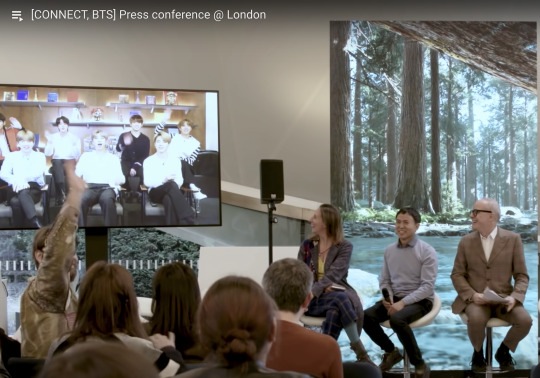
A good explanation of what CONNECT, BTS appeared on DAZED, January 14, 2020.
It was a huge wide-ranging global art project to link visual art to music art. This is one of the installations in New York City:

Then we see scenes of them arriving at Incheon Airport in February 2020.
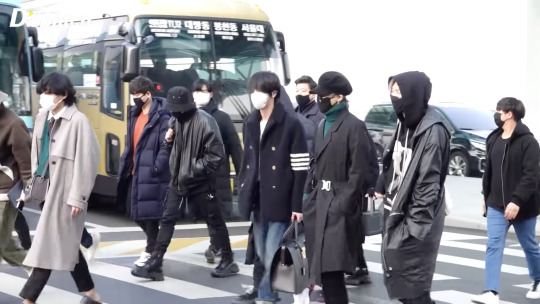
In February 2020, they were about to embark on the MOTS world tour. They were really pushing into the western market, especially the United States. They were headed to the States to start promoting on the talk show circuit and for magazine interviews. Western media was all over BTS. The public relations hype for their tour was huge. It was going to be HUGE. BTS was HUGE. At this point in the documentary we see english speaking fans trying to buy tickets for this tour.
This was the beginning of the year that would be their magnum opus.
Leading the docu-series with this reminds everyone what was supposed to happen and the impact they hoped to make here in the United States, to ride the wave of their success as far as they could go until they had to stop. Keep in mind they did not have any full English songs yet.
As far as they knew, this would be the end as we knew it, the end of Chapter 1. We all know what was to follow the MOTS tour even though no one wanted to speak about it: Enlistment. Jin would enlist December 2020 even though rumblings of a potential military exemption were beginning to buzz.
This period of time and after was when MANY MORE became fans of BTS. MOTS:7 was a record-breaking album. They were riding HIGH.
The scene of them being told the MOTS tour was cancelled is gut-wrenching. It makes me think of the content they filmed that day (March 8, 2020 a music show?)
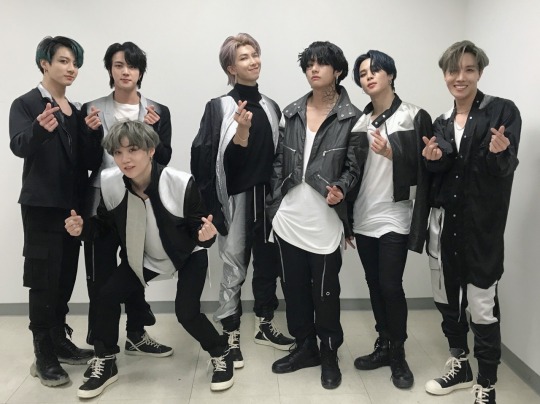
and I wonder at what point during the day they were told. Jimin and Hobi did a Vlive:
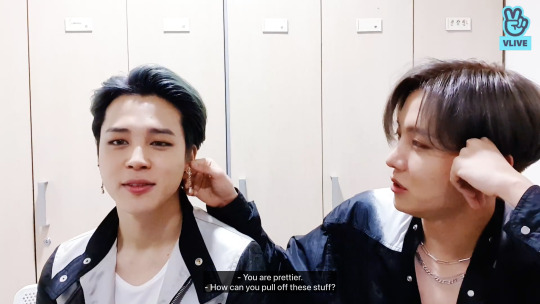
There are scenes of MOTS cancellation day in 2020 Memories, but not THIS scene of them being told the tour was cancelled.
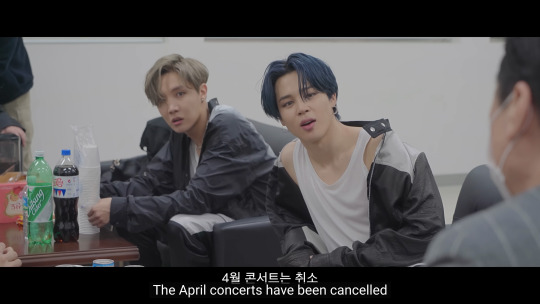
Then we jump forward to scenes of the members on the beach in LA (end of 2021) recalling their feelings and thoughts about the previous (almost) two years (the pandemic), reflecting on themselves. They had to overcome frustration, and change and adapt to reality.
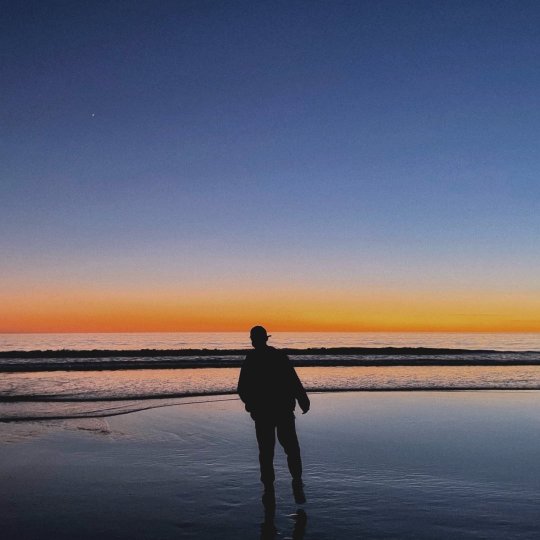
Some of them were able to do that easier than the others. We know Jimin had a rough time, and it was challenging for Jin, Tae and Yoongi. Namjoon and Hobi worked on music. Yoongi wondered what was the point of even releasing music at all.
Jungkook says even though they were sad, something good came of it, they realized how much singing and dancing – performing – meant to them and how it superseded everything else.
Jimin says he and Namjoon spoke about how they needed to organize their thoughts over the years pertaining to the reasons they are doing what they do, how they feel and what they want to do, perhaps in order to help them sort through the pandemic aftermath and to serve as sort of an outline of how to proceed... it is sort of how the rest of this documentary series unfolds: the past, the present, the future.
Namjoon begins sharing thoughts of how he felt in the beginning and we flash back to 2013 debut. And the rest say their thoughts about how they began. This is a good way for newer fans to understand how they began: hearing their words as mature adults reminiscing about their roots and their start.
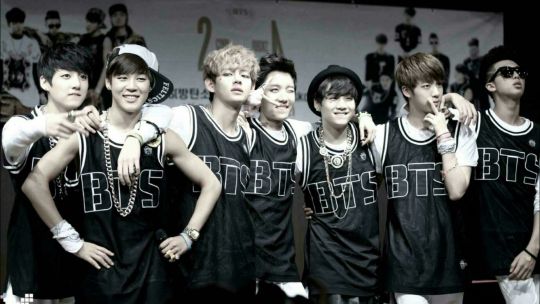
We’ve heard the general story of how they began with RM first and the rap line was assembled, then the vocal line was added with Jimin being the last to make the team. Bang PD recalls how impressed he was with Namjoon and knew this was someone special.
I’m positive there were opinions, decisions and choices made that we will never know because we weren’t there witnessing the moments. Whatever those decisions were, some probably forgotten in time or only known by a few involved in the process, however it happened, these seven individuals were settled upon and the team was created. The rest is history.
No one had an inkling of how much they would change the idol and kpop industry from what they then knew it to be.
Preparing for debut: one of the things Jungkook says is they expected hardships back then but looking back now, if he tried to do that now, he couldn’t do it, but back then, it was a given. Yoongi said they spent every moment in the practice room when they weren’t eating or sleeping… up all night practicing, so much stress and pressure amongst seven young passionate young men trying to make a good debut.…you can see the stress and fatigue on their faces.
Through all of that they reveal how hard they worked and how deep their commitment is. They felt it was important to convey this deep personal connection to each other they developed and how strong their bond is.
The events might be repetitive for people who’ve been Army since the beginning or since before 2020, but for the benefit of newer fans, presenting their story like this in the words of each member is important.
The author of the book Beyond the Story, Myung Seok Kang, explains how much of an underdog BTS was in the beginning. They were from a small, barely making it company and had the audacity to win Best New Artist in 2013 at the Melon Music Awards.
Hearing them state how they felt during that debut year, their young minds trying to process what was happening, thrust into society at such a young age, seeing their friends still being students, they had to reconcile within themselves that their lives were so different.
Jungkook (our now giant global pop star) said he remembers how small he felt hearing another really good singer in his in-ears as they prepared for a performance.
Watching them struggle to come up with the melody for Danger, working on it as a team from Jungkook, to Namjoon, to Yoongi, note by note… at such a young age and then not experiencing the expected success or gains after they had done that with the previous song… they thought this would be the end for them. All they wanted was to win first place at a music show…. CAN YOU IMAGINE?? The team was wavering.
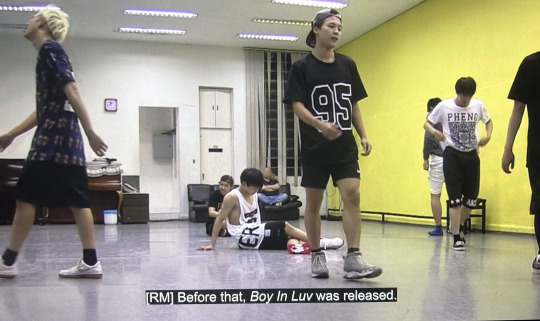
Newer fans need to be aware of this struggle.
All of this led to them writing the album, The Most Beautiful Moment in Life, the real start of their rise to stardom. They finally bagged that 1st place music show win with I Need U. The win gave them the confidence they needed to push forward and they kept winning with each song after that. Seeing their confidence grow after each win is exhilarating.
This album is the turning point in their career, the launch pad, so-to-speak.
And the song, Yet to Come (The Most Beautiful Moment in Life) is the thread connecting Chapter 1 to Chapter 2 and beyond. We will have a Most Beautiful Moment in Life 10th Anniversary in 2025. This docu-series is the bridge between what was then, now and what is … yet to come.
Review of Episode 2 next…
#if you can read the book it adds so much more#bts beyond the star#jimin#jungkook#hobi#namjoon#yoongi#jin#taehyung#what will the song be that connects YTC with the future?
59 notes
·
View notes
Text
One of the many knock-on effects of Marvel making post-credit scenes a feature of the studio’s cinematic universe is that fans get a glimpse of just how many “below-the-line” workers it takes to make all that superhero movie magic. Production designers, hair and makeup folks, camera operators, the lists run on and on. Amongst them, usually toward the end, as theatergoers are eagerly anticipating that tease for the next MCU movie, are lists of the visual effects studios—places with names like Framestore, The Third Floor, Cinesite—that created all of those space scenes and Wakanda visuals. But unlike most of the other names in those credits, the ones attached to VFX artists have never been in a professional union.
On Monday, some folks at Marvel made a move to change that, with a supermajority of Marvel Studios’ VFX crew signing cards saying they want to be represented by the International Alliance of Theatrical Stage Employees (IATSE).
To be clear, the Marvel team is a small faction of a huge industry and doesn’t represent all those outside VFX houses that also work on MCU films. But their move marks a huge shift in Hollywood at a time when people in other industry unions—the Writers Guild of America (WGA) and the Screen Actors Guild—American Federation of Television and Radio Artists (SAG-AFTRA)—are on strike to get better deals with the major studios. VFX workers have been talking about unionizing for more than a decade, says Bilali Mack, a VFX supervisor who has worked on everything from The Whale to The Flash. The fact that one group, albeit a small one, has taken steps to unionize is “huge,” he says.
This moment has roots in 2013, when Life of Pi won the Oscar for Best Visual Effects just as the company that worked on those effects, Rhythm & Hues, was facing bankruptcy. When the movie’s VFX supervisor, Bill Westenhofer, took the stage to accept his award he said the traditional thank yous and then added “Sadly, Rhythm & Hues is suffering severe financial difficulties right now. I urge you all to remember …”—at which point his mic was cut off and the theme from Jaws began to play.
Rhythm & Hues wasn’t the only VFX studio facing troubles. Some 21 similar companies shuttered between 2003 and 2013, due in part to production delays and the fact that many jobs were going to companies based outside the US, where tax subsidies and incentives give VFX houses a better shot at survival. Attempts to organize have been bubbling up ever since, and this week they bubbled over. “We are witnessing an unprecedented wave of solidarity that’s breaking down old barriers in the industry,” IATSE president Matthew Loeb said in a statement. “That doesn’t happen in a vacuum.”
Loeb was, of course, talking about the fact that the unionization effort at Marvel is happening amidst the SAG and WGA strikes, which may be emboldening folks in other Hollywood sectors. When the Marvel news came, I called Dave Rand. He’d worked on Life of Pi at Rhythm & Hues and had helped organize a protest outside the Oscars on the night the movie won. He agreed that the current strikes played a role but added that the VFX workers who are laid off or on hiatus amidst the strikes may be hesitant to organize because they’re worried about landing their next job. Still, he added, “it’s a step in the right direction, and it can set an example.”
Considering artificial intelligence has been a major point of contention in the Hollywood strikes so far, I asked Rand and Mack if it might be on VFX artists’ minds as well. Both agreed that it was, adding that AI can be a tool for VFX artists, but it will still always require a human to guide it. Is it possible, I asked Mack, that studios would try to create shots with AI and then have human VFX artists clean them up?
“A hundred percent,” Mack replied. “That’s a legitimate worry. Because there’s a saying in visual effects, and I think in a lot of other industries, which is that the first 90 percent takes 10 percent of your time, the last 10 percent takes 90 percent. They’re gonna spit it out, it’s gonna be a piece of crap. Then they’re just gonna be like, ‘We just want it to look perfect and feature film quality,’” and then a VFX company will get called in to spend 90 percent of their time to get paid for 10 percent of the work.
Whether that scenario plays out remains to be seen. The National Labor Relations Board still needs to do due diligence on the Marvel VFX team’s request. Only after that’s complete will all members of the eligible Marvel team be able to vote on whether they want to join the union. And only then, presumably, will it be known whether the other visual effects studios in the MCU credit sequences follow in their footsteps.
116 notes
·
View notes
Text

stage name : misaki
birth name: kang hyunjin
> listed as hyunjin misaki kang in other sources
pronouns : she/her
position : main dancer, visual
birthday : december 25th, 1999
zodiac sign : capricorn
nationality : japanese, korean-american
sub-unit(s) : performance
instagram : @ kanghm

misaki facts !
> misaki was born in kyoto, japan.
> her family moved to long island, new york shortly after she was born.
> her family consists of her parents.
> misaki is half-japanese and half-korean.
> misaki goes by her japanese name/middle name most commonly. however, she does not mind if people use her first name.
> misaki has been a trainee under pledis since 2014.
> misaki was supposed to debut in a girl group under pledis in 2020, but the debut never happened due to internal problems and due to the coronavirus outbreak.
> misaki officially joined seventeen in april 2023 with their 10th mini album "fml".
> misaki is able to speak korean, english, and japanese.
> misaki usually speaks to joshua and vernon in english.
> misaki is a former gymnast. she started when she was six and competed across the u.s.a. until she auditioned for pledis entertainment at the end of 2013.
> misaki started dancing when she was five at a studio in her hometown, but she was more focused on gymnastics rather than dancing.
> misaki auditioned for pledis by dancing to "because of you" by after school and "the boys" by girls generation. during her audition, she had to rap and sing for the first time.
> as a trainee, she started to learn how to produce music with woozi as one of her mentors.
> misaki is known to be very quiet, so sometimes she'll wander off on her own. the guys and staff members try to make sure that someone is with her at all times so she doesn't disappear.
> misaki is really shy at first, but she opens up once she is comfortable enough.
> misaki is really bad at contacting others through her phone because she keeps a lot of her notifications off. she had to compromise with s.coups to keep seventeen and other staff's notifications on.
> misaki's favorite activities are dancing, watching videos/tv, shopping.
> misaki does not know how to swim.
> misaki participated in several pledis artists's performances prior to her debut as a backup dancer. [link 1] [link 2]
> misaki takes classes at different dance studios when she has the opportunity to do so.
> misaki's favorite seventeen songs are: "fallin' flower", "cheers”, “_world”, “to you”, and many other songs.
> misaki's favorite "going seventeen" episodes are the "don't lie" series and "catch stock."
> she lives in the dorm where s.coups, the8, and joshua used to live in.

return to masterlist
to be updated as needed
last update : mar 14, 2025

18 notes
·
View notes
Text
From Cherry Blossoms to Giant Robots: How Anime and Japanese Culture Captivate the World
Imagine a world where cherry blossoms float through the air, where samurai honor codes meet futuristic technology, and where everyone, from a teenager in New York to a retiree in Paris, can find joy in animated tales of adventure, romance, and heroism. Welcome to the realm of anime and Japanese culture, a vibrant, dynamic force that has crossed borders and generations, leaving an indelible mark on global society.

The importance and growth of anime.
Anime, Japan's unique style of animation, isn't just cartoons it's a cultural phenomenon. From classics like "Astro Boy" and "Dragon Ball" to modern hits like "Attack on Titan" and "My Hero Academia," anime has a diverse range of genres that appeal to all ages. What makes anime so special? It's the blend of intricate storytelling, complex characters, and stunning visuals. These aren't just shows; they're experiences that pull you into their world.
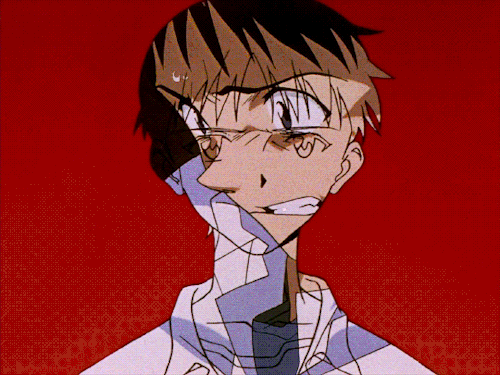
Anime is a gateway to Japanese culture. Through anime, viewers learn about traditional customs, festivals, and even cuisine. Think of "Spirited Away," where the protagonist, Chihiro, navigates a magical bathhouse filled with spirits a nod to Japan's rich folklore and Shinto beliefs. Or "Your Name," which beautifully portrays the rural-urban divide and the traditional practice of "musubi" (tying threads as a symbol of connection).
Global influence by connecting generations
Anime's influence stretches far beyond entertainment. It's a style, a vibe, a community. Fashion brands like Uniqlo and Gucci have launched anime-themed collections, while sports stars like Naomi Osaka openly express their love for anime characters. Moreover, the principles and aesthetics of anime have seeped into global pop culture, inspiring everything from Hollywood films to video games.
One of the most magical aspects of anime is its ability to bridge generational gaps. Parents and children can bond over shared favorites like "Pokémon" or "Studio Ghibli" films. For the older generation, anime offers a nostalgic trip back to their childhood while providing fresh stories that resonate with today's themes and issues.
Anime has created a global community of fans who gather at conventions, participate in cosplay, and engage in online discussions. Events like Anime Expo in Los Angeles or Comiket in Tokyo draw fans from all over the world, celebrating their love for this unique art form.

Fun Fact: The Origins of Cosplay
Did you know that cosplay (dressing up as characters from anime, manga, and video games) originated in Japan? The term "cosplay" comes from "costume play," and it has become a worldwide phenomenon. From local conventions to international events, cosplay is a testament to the creativity and dedication of anime fans.

Anime and Japanese culture are more than just entertainment they are a window into a different way of life, filled with beauty, tradition, and endless creativity. They remind us that, no matter where we are in the world, we can find common ground in the stories we love and the values they teach us. So, whether you're a seasoned otaku or a curious newcomer, dive into the world of anime. You might just find a new favorite story or even a new perspective on life.

Ready to start your anime journey? Check out classics like "Naruto" or "Sailor Moon," or dive into newer hits like "Demon Slayer" or "Jujutsu Kaisen." And if you're already a fan, share your favorite anime moments with someone new you never know whose life you might brighten with a little bit of anime magic.
Happy watching, and may your adventures be as epic as your favorite anime!

References.
Cavallaro, D. (2010). Anime and the visual novel: Narrative structure, design and play at the crossroads of animation and computer games. McFarland.
Condry, I. (2013). The soul of anime: Collaborative creativity and Japan's media success story. Duke University Press.
Napier, S. J. (2005). Anime from Akira to Howl's Moving Castle: Experiencing contemporary Japanese animation. Palgrave Macmillan.
Noppe, N. (2013). Fanning the flames of fandom: The commercialization and transformation of fan activities in the age of media mix. In M. Ito, D. Okabe, & I. Tsuji (Eds.), Fandom unbound: Otaku culture in a connected world (pp. 104-127). Yale University Press.
Steinberg, M. (2012). Anime's media mix: Franchising toys and characters in Japan. University of Minnesota Press.
21 notes
·
View notes
Text
ANIMALS KNOW HOW to HAVE FUN(1295)
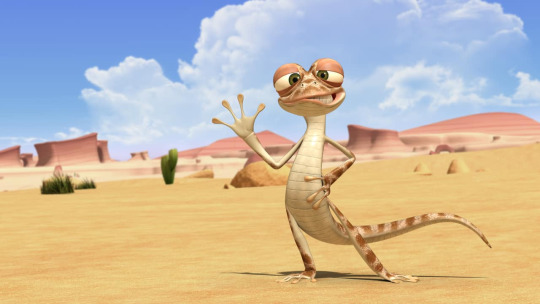
A series of short animated videos that will amaze you in a fun way and the product of a great imagery imagination and creativeness.
youtube
link https://youtu.be/nPrWo5pEvyk
"5 Metres 80" (also know as high diviing Giraffes) is an award-winning computer generated short animation film produced by Cube Creative & directed by Nicholas Deveaux.
The animated short was inspired by '7 Tonnes 3′, an earlier project by Devaux which featured an elephant jumping on a trampoline. Below
youtube
link https://youtu.be/TK27aknWVI4
youtube
link https://youtu.be/rDWzQ6lZNpY
Oscar's Oasis is an animated comedy television series consisting of 78 seven (7)-minute episodes. It was produced by TeamTO and Tuba Entertainment, in co-production with Cake Entertainment and Synergy Media. The show takes heavy inspiration from the Wile E. Coyote and Road Runner shorts from the Golden age of American animation. Oscar's Oasis - Wikipedia
youtube
link https://youtu.be/F3lASSa7jjg
"Athleticus" is an animated series created by Nicolas Deveaux. The series is produced by Cube Creative Productions and ARTE France. The show features wild animals competing in various athletic events. (AI Copilot)
youtube
link https://youtu.be/j16xNzNQ8Gk
youtube
link https://youtu.be/LtnQsVc40MY
"Rollin' Wild" is a series of animated short films created by students at the German Filmakademie Baden-Wuerttemberg in 20121. The project was led by Kyra Buschor, Ännie Habermehl, and Constantin Paeplow. The concept revolves around a whimsical world where all animals are round,exploring how their daily lives would be affected by this transformation. Continue reading (note 1 at bottom)
youtube
link https://youtu.be/YrmXjoyqGQQ
Leon of Lion created "Life's Unluckiest Lion!" by the French "Studio Hari", an animation studio founded in 2006 by Josselin Charier and Antoine Rodelet. The studio specializes in producing high-quality 3D animated TV series and films for children and families. They are known for their original character-driven properties and have built a reputation for blending artistic brilliance with technical mastery. (AI Copiot)
youtube
link https://youtu.be/lw21Ji8GHb0
"1 METRE/HEURE" is a short animated film directed by Nicolas Deveaux1. The film is set on an airplane wing, where a group of snails performs a beautifully choreographed dance2. The film explores the contrast between human time and the much slower pace of the snails, creating a surreal and visually captivating experience
youtube
link https://youtu.be/-EHAhuNi0sM
Liuyu Animation is a creative studio based in China, known for producing animated content that often features imaginative and educational themes. While specific details about the individual creators behind the studio aren't widely available, it's clear that they focus on creating engaging and visually appealing content for a younger audience.
Their work, such as the "Savanna Version - Zebra" series, showcases their ability to blend humor, creativity, and educational elements to entertain and inform viewers. The studio seems to be dedicated to exploring various aspects of nature and animal life, making their content both fun and informative. (AI Copilot)

NOTES:
NOTE 1: The short films were produced as trailers for the Stuttgart International Festival of Animated Film (ITFS) 2013 and the FMX 2013 festival. The unique and imaginative idea quickly gained popularity, leading to the creation of more content under the "Rollin' Wild" banner.
The creators of "Rollin' Wild", Kyra Buschor and Constantin Paeplow, are both alumni of the Filmakademie Baden-Wuerttemberg in Germany. They collaborated on the project while studying there, and their unique and imaginative concept quickly gained attention and acclaim.
Are they mimicking today's obesity problem? It seems like "Rollin' Wild" does touch on themes related to obesity and the consequences of unhealthy eating habits, but it's done in a whimsical and exaggerated way. The series imagines a world where all animals are round, which can be seen as a playful commentary on the effects of overeating and obesity.
The creators, Kyra Buschor and Constantin Paeplow, use humor and creativity to highlight these issues, making the shorts both entertaining and thought-provoking. It's a fun way to raise awareness about the importance of healthy eating and lifestyle choices.
Was this their intention?While the creators of "Rollin' Wild," Kyra Buschor and Constantin Paeplow, haven't explicitly stated that their intention was to comment on obesity, the exaggerated, round shapes of the animals can be seenas a playful nod to the idea. The series more broadly explores humor and the whimsical consequences of animals being unexpectedly rotund, using it as a vehicle for entertainment and subtle social commentary. It's one of those creative works that can be interpreted in multiple ways, allowing viewers to derive their own meanings and messages. Enjoy the whimsy while pondering the deeper implications! (AI Copilot)
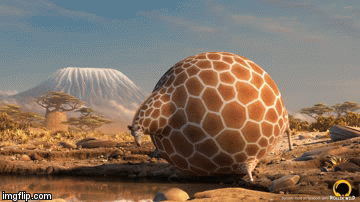
#1295#animated#shorts#5 Metres 80#7 Tonnes 3#1 METRE/HEURE#Athleticus#Cube Creative#dir. Nicholas Deveaux.#Oscar's Oasis#produced by TeamTO and Tuba Entertainment#Leon of Lion#Studio Hari”#dir. Josselin Charier and Antoine Rodelet.#2025-01-07
7 notes
·
View notes